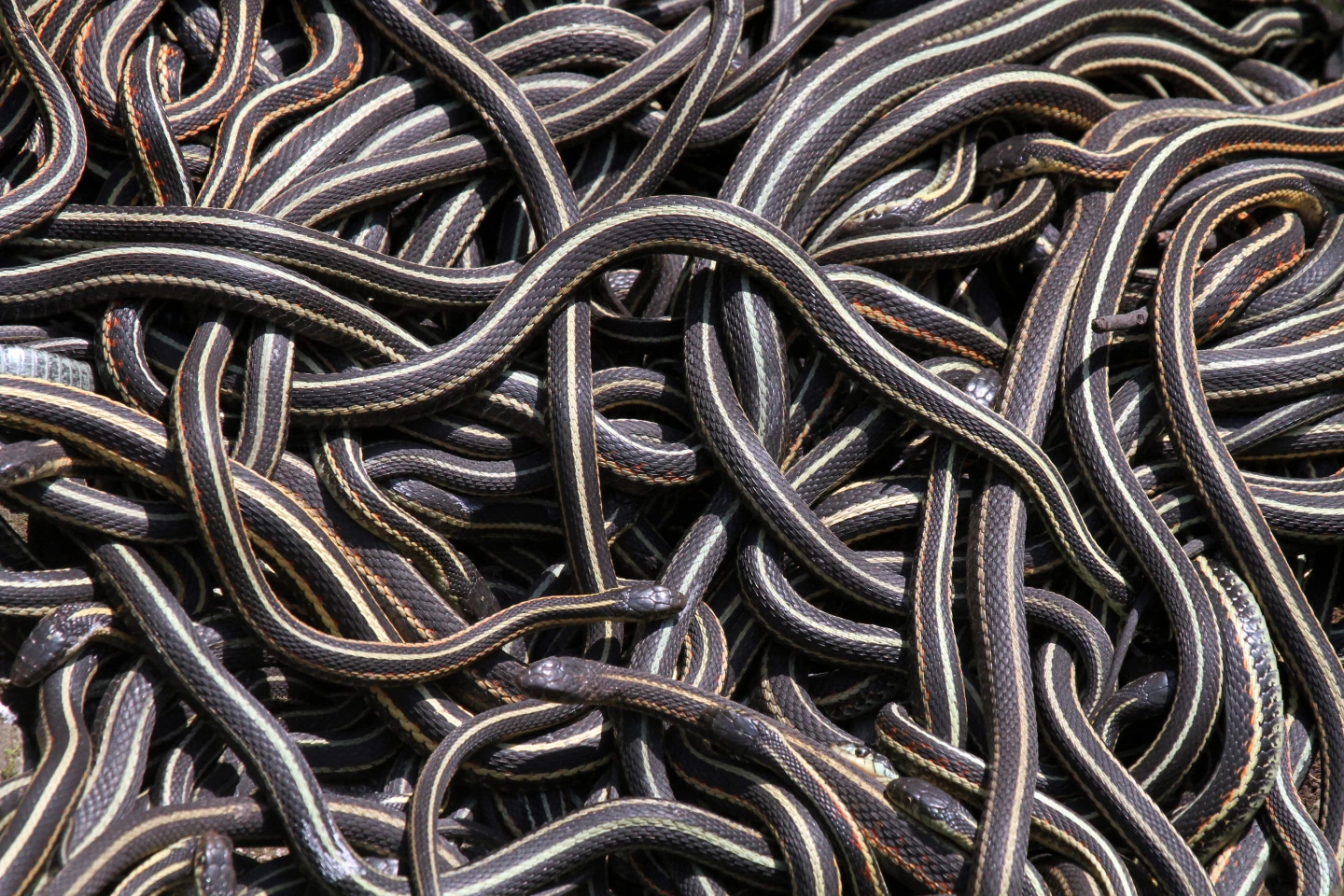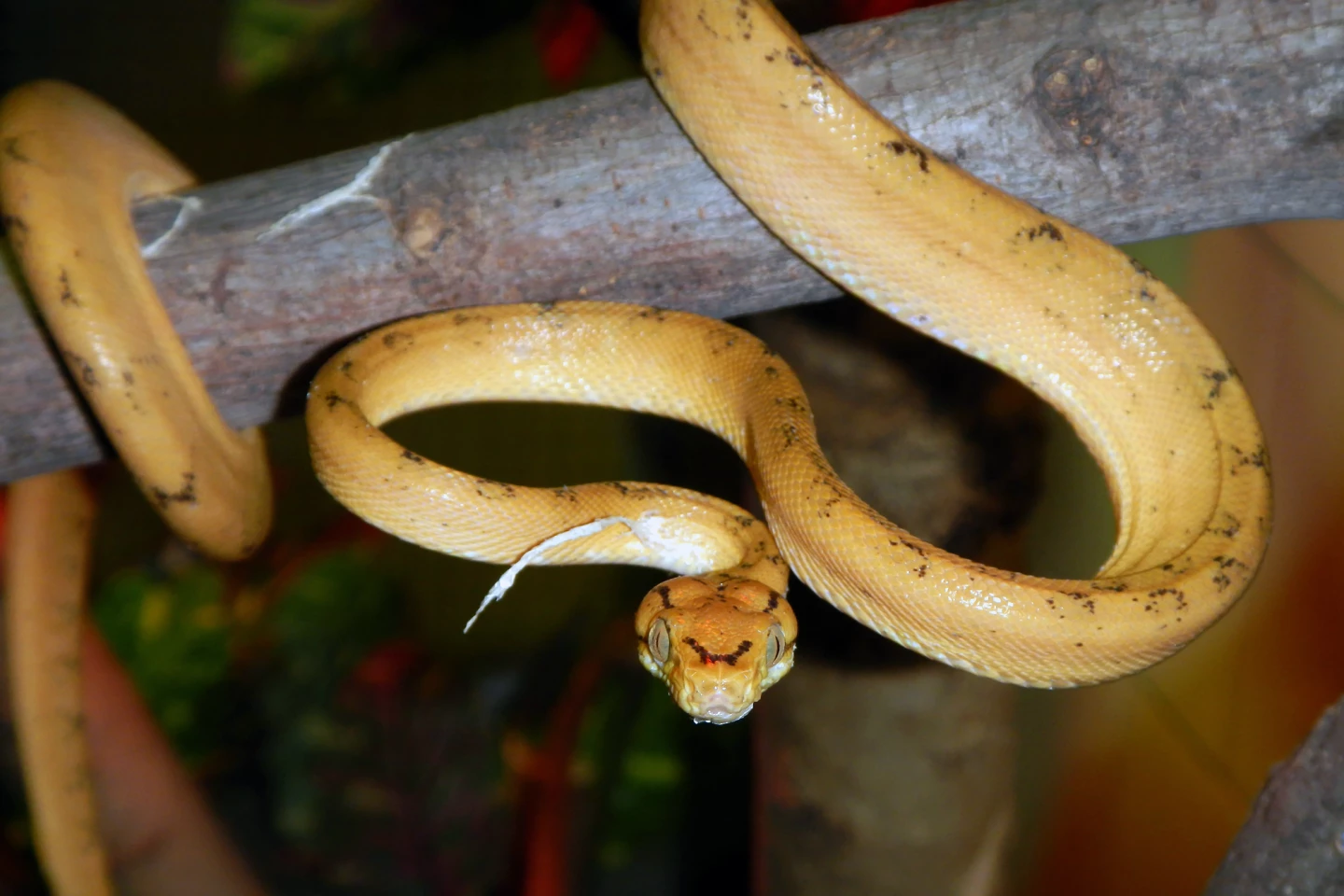The discovery of a quartet of fossilized snakes, a never-before-seen species from the boa family that lived 38 million years ago, has provided paleontologists with a rare insight into reptilian social behavior and provides clues about the evolution of its modern ancestors.
When you think of snakes, you probably don’t think of them as social creatures. Apart from garter snakes, which are known to cluster together in their hundreds in what’s called a hibernaculum during the winter months, most snakes are solo actors.
However, the discovery of a well-preserved fossil of four snakes huddled in what appears to be a hibernaculum has not only identified a new species but provided the first clear evidence of reptilian social behavior in the fossil record.
“This is really unusual for reptiles,” said Professor Michael Caldwell, a paleontologist from the Faculty of Science at the University of Alberta, Canada, and the study’s senior author. “Of the almost 15,000 different kinds of reptile species alive today, none of them hibernate in the way that garter snakes do.”
As temperatures begin to cool, garter snakes seek out an underground structure – such as an old animal burrow or a man-made structure, including houses – to be their hibernaculum. Hundreds, sometimes thousands, of garter snakes will gather there for protection until spring begins, when they venture out of their cozy nest. Oh, and other snake species have cottoned on to what the garter snakes get up to when it’s cold out and sometimes muscle in on the hibernaculum for the protection it affords.

That the four fossilized ancient snakes were found huddled together gave the researchers insight into the reptiles’ social behavior, and indicated that modern garter snakes’ practice of gathering in a hibernaculum was an adaptation designed to help them survive the colder months.
“They can’t regulate their body temperature, so they need to find a way to conserve as much heat as they can through the winter, and they do this by forming these big masses,” Caldwell said.
The other thing that set these specimens apart from many others was that the snakes were articulated, meaning that they were found in one piece, with the vertebral bones in the proper order. According to Caldwell, that’s unusual.
“There are probably, in the world’s museum collections, nearly a million disarticulated snake vertebrae,” he said. “They are easy to find. But finding the whole snake? That’s rare.”
Examining the specimens’ unique anatomical features, the researchers saw they were a never-before-identified burrowing species from the boa family, or Boidae, Hibernophis breithaupti. The word breithaupti originates from German and translates as ‘broad head.’ One of the snakes was about twice the size of the others, allowing the researchers to see the species at different stages of its development.

“We learn quite a bit more about Boidae evolution in the broad sense,” said Caldwell. “It seems that they probably started out as relatively small-bodied snakes, which is interesting.”
The fossils were found in the west of what is now the state of Wyoming in the US. That indicates that when Hibernophis breithaupti was slithering around 38 million years ago, northern and more central parts of North America might have been key to its evolution. Based on the fossils’ near-pristine preserved state, due to where they were found, the researchers think the snakes died as a result of flooding.
“They were preserved in a very unusual circumstance, geologically speaking,” Caldwell said. “Fossilization is a rough process. You need exactly the right conditions to preserve something.”
The study was published in the Zoological Journal of the Linnean Society.
Source: University of Alberta







